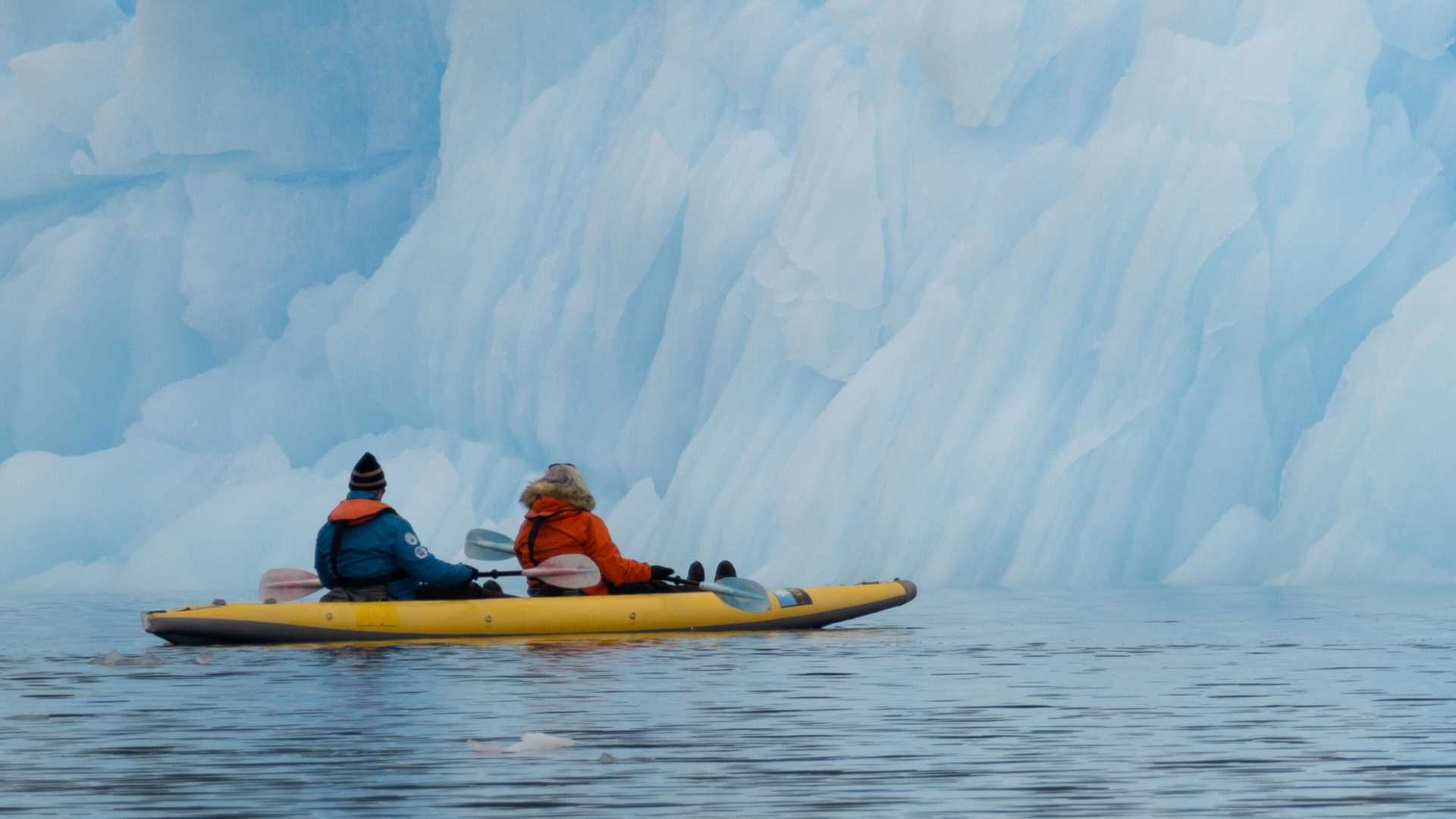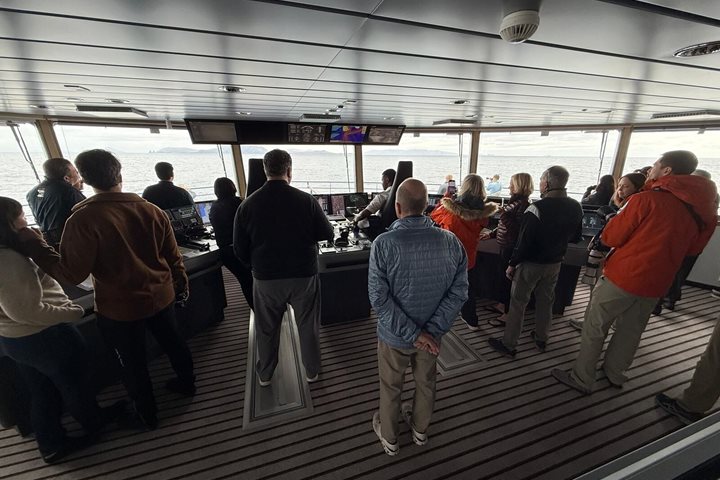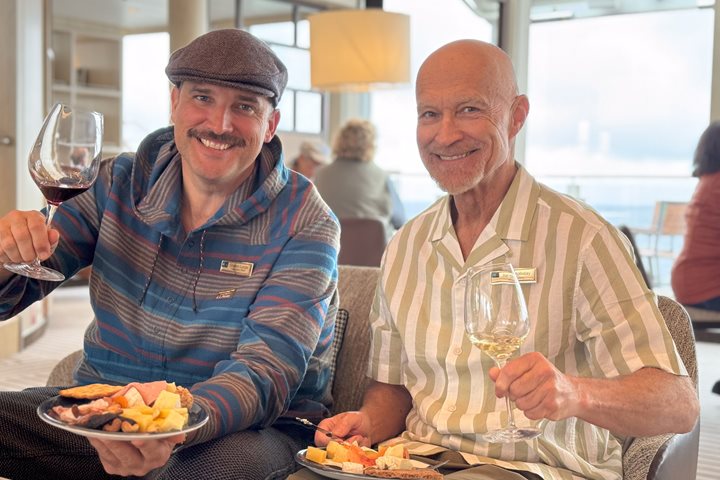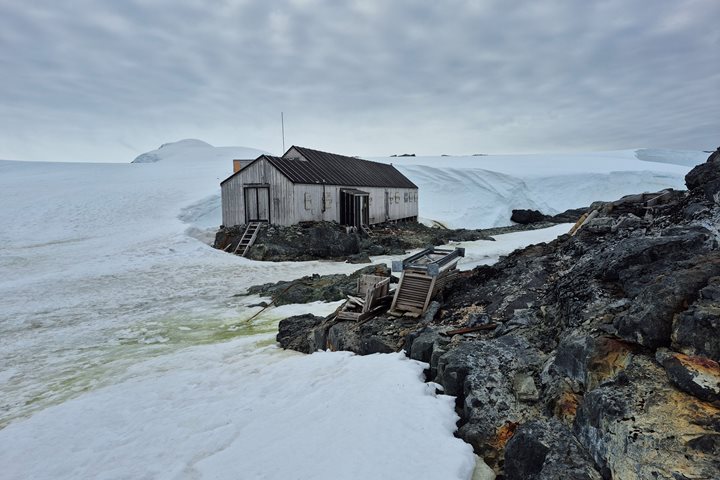Today the intrepid explorers on National Geographic Explorer started their morning adventuring in the protected waters of Croft Bay, on the north end of James Ross Island. Some adventurers took to the sea in kayaks, while others cruised around in Zodiacs, as they frolicked in the majesty of the ice and glaciers of this beautiful Antarctic bay. In true expedition fashion, other brave adventurers landed on the shores of Croft Bay, a first for any ship in the National Geographic fleet. These explorers made a strenuous hike, climbing 200 meters over loose and rocky terrain, to reach their ultimate prize - the base of a glacier with flowing waterfalls, vegetation, and the unique beauty of Antarctica.
When all parties returned to shore, several guests participated in the ultimate immersion into the Antarctic environment – the Polar Plunge. These brave souls were greeted by the sweet zero degree embrace of the ocean’s sweet splendor.
The afternoon and evening found National Geographic Explorer circumnavigating James Ross Island. During this voyage, the adventurers were delighted by Antarctica’s stunning scenery and ice, as well as visits from its majestic animals including several pods of killer whales.









